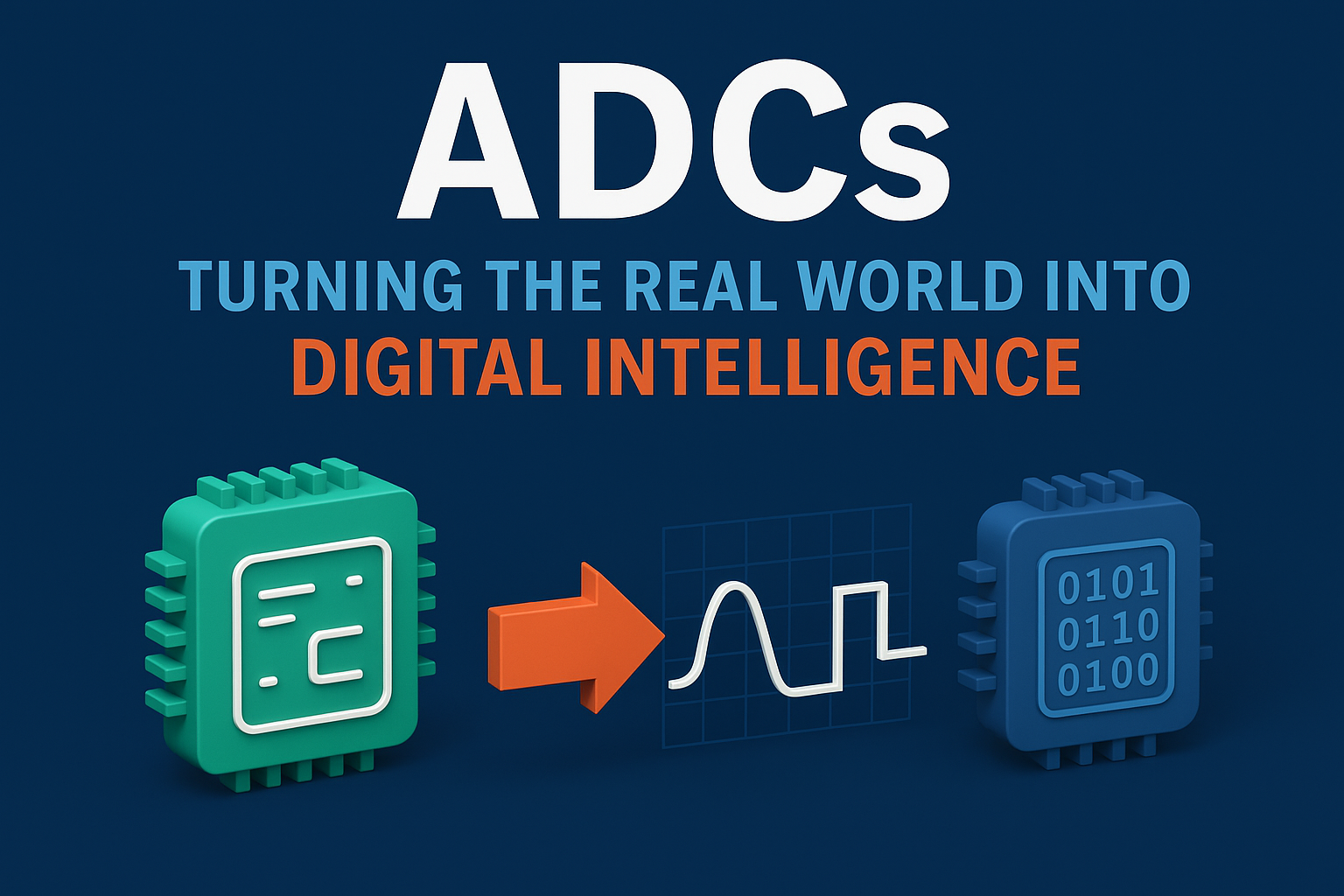
Every signal in nature whether it is a light, a sound, a motion or a temperature is analogue, flowing continuously with time. Yet, every modern electronic system such as microcontrollers, processors and IoT devices understands only digital code.
So how do we get from the smooth world of physics to the sharp world of zeros and ones? The answer is the Analog-to-Digital Converter (ADC), in other words, the essential bridge between reality and electronics.
Why Sampling Matters
When a sensor generates a voltage signal, the ADC doesn’t just capture it once, it samples it repeatedly. The faster a signal changes, the faster the ADC must sample to keep up.
The Nyquist–Shannon rule guides engineers here: sample at least twice as fast as the signal’s highest frequency. Too slow, and aliasing occurs where signals blur and overlap, creating errors.
Accuracy and Noise
Every conversion introduces tiny differences called quantisation errors. These appear as noise in the digital output. The closer an ADC can represent the real analogue signal, the higher its accuracy.
Engineers improve accuracy by:
- Increasing the resolution (better detail in slow or subtle signals).
- Increasing the sampling rate (better tracking of fast signals).
Resolution: Seeing the Fine Details
ADCs also differ in resolution, measured in bits. More bits mean more precision:
- A high-resolution ADC can capture subtle signals like seismic activity.
- Lower resolutions may be enough for larger, less delicate signals such as motor vibrations.
This makes resolution one of the most critical factors when selecting an ADC for your design.
Choosing the Right ADC Technology
Different applications call for different ADC architectures:
- Sigma-Delta (ΣΔ) → High precision for industrial sensing (e.g., pressure, temperature).
- Pipelined → Ultra-fast conversions for data-heavy systems (e.g., communications, radar, medical imaging).
- SAR (Successive Approximation Register) → Fast and efficient for multi-channel, real-time systems (e.g., wearables, robotics, motor control).
The Bottom Line
Without ADCs, digital systems would be blind to the physical world. These small but powerful components decide how well your product can measure, analyse, and respond to reality.
At Moondust Electronics Ltd, we supply ADCs and electronic components that let engineers design devices which don’t just compute, but truly understand the world around them.